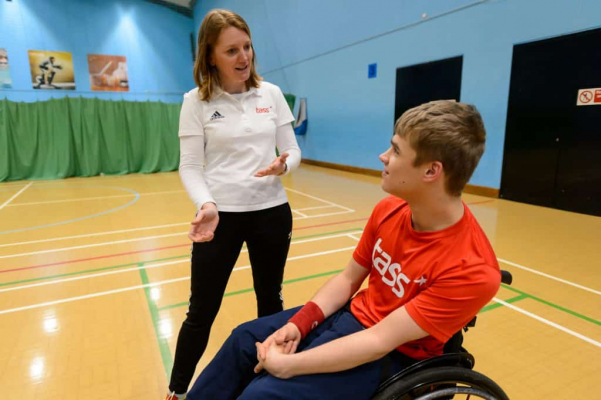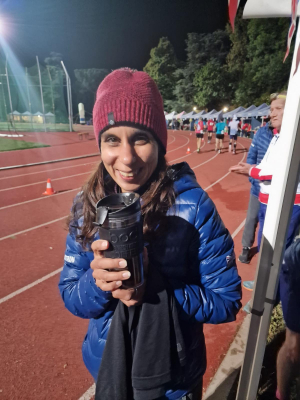Ask your child: what did you do today?
Sports Psychologist Helen Davis discusses relaxation methods with a boccia player.
We’re NUSTEM, and today we visited your child’s school to introduce them to the different careers in sports science. We’re from Northumbria University and we’ll be working with your child’s school over the next 2 – 4 years.
If you’d like to jump to our sports science activity, click here.
Sports scientists are important people in improving athlete performance and health. They work in areas like:
- psychology – how athletes think and feel,
- physiotherapy – how athletes can recover from injury,
- diet – what athletes should eat to help them perform at their best,
- performance analysis – how atletes can improve their skills.
Here are three key attributes of sports scientists that we discussed in class:
- Observant: They monitor details to analyse progress and setbacks.
- Logical: They approach problems in a sensible step-by-step way.
- Communicators: They explain complex information in understandable ways.
By exploring different sport scientist jobs, we help children to see themselves as potential future scientists with skills they can develop.
You could encourage your child to talk about what they learned about the roles and attributes of sports scientists today.
What do sports scientists do?
Sports Dietician Renee McGregor prepares athletes for competition by discussing the food they eat.
Sports scientists play an important role in the world of sports and athletics. They might start by taking baseline measurements. These are measurements of an athlete’s strength, speed, and fitness levels at the start of a training program. Today your child acted like different sports scientists and took some baseline measurements.
Ask your child which of these baseline measurements they remember taking.
- Heart rate baseline
- Jump height baseline
- Physical strength levels baseline
To help the athlete improve, sports scientists then create a plan based on these baseline measurements. They regularly check the athletes to take these measurements again. After training, the sports scientists compare these new measurements to the initial baseline measuerments to see if there is an improvement in the athletes performance.
Different sports scientists might focus on:
- Developing customised training programs to enhance specific physical and mental skills.
- Providing dietary advice to improve performance.
- Recovery support, designing routines that aid in the recovery from injuries.
This form of scientific support boosts athlete’s performance and also enhances the overall well-being of athletes, making sure they can perform at their best.
Do try this at home: measure your reactions
Curious about how fast you can react? Here’s a simple activity you can do at home as a sports scientist to check an athlete’s reaction time baseline.
All you need is a ruler and a partner—maybe a parent or other family member. This test will give you an idea of how quick an athlete’s reactions are.
What You’ll Need:
- A ruler (preferably 30 cm or longer)
- A partner (maybe a sibling or parent)
Instructions:
- Get Ready: Stand or sit comfortably with your arm extended. Your partner holds the ruler vertically, with the 0 cm end between your thumb and forefinger.
- Eyes Closed: Close your eyes while your partner holds the ruler steady. Make sure your thumb and forefinger are positioned at the bottom of the ruler without gripping it.
- Drop and Catch: On your partner’s signal (they should say “Now!”), Try to catch the ruler as quickly as you can using your thumb and forefinger.
- Measure Your Success: Note the measurement on the ruler where your grip stopped its fall. The number of centimeters the ruler falls is the measure of your reaction time. Lower numbers indicate faster reactions!
- Repeat and Record: Try the test a few times, and record each attempt to see if you can improve your reaction time with practice.
- Challenge Others: Now, swap roles and let your partner test their reaction time.




